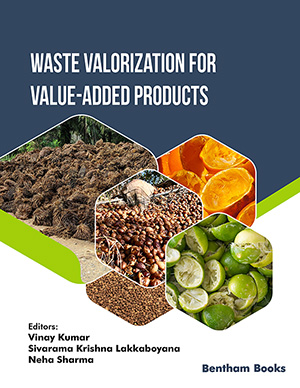Abstract
Background: With the continuous application of API 5L X100 high-strength grade steel pipeline and the development trend of increasing pipeline diameter and design pressure in China's long natural gas and petroleum pipeline, API 5L X100 high-strength grade steel pipeline steel is bound to become the aorta in long-distance pipeline construction in the future. Studying the failure pressure of API 5L X100 high-strength grade steel pipeline has high economic and social benefits.
Objective: Exploring the corrosion mechanism of the two single corroded pipeline models with outer defect and inner defect.
Methods: Using ANSYS Workbench 15.0 software to explore the two single corroded pipeline models with outer defect and inner defect and the influence of geometric parameters such as defect depth, defect length, defect width, etc., on the maximum equivalent stress and failure pressure investigated. Based on the finite element analysis database, the failure pressures of two single corroded pipeline models were fitted using Matlab software and the fitting formulas.
Results: In the corrosion defect area of the pipeline, stress concentration occurs; Far away from the corrosion defect area, the stress distribution is uniform. For the pipeline model with outer defect and inner defect, as the defect depth and length increases, failure pressure shows a decreasing trend and is almost unaffected by defect width; As the ratio of diameter to thickness increases, failure pressure shows a decreasing trend; By fitting failure pressure formula of the pipeline models with outer defect and inner defect, a multivariate fitting function formula of failure pressure is obtained, with high fitting exactitude.
Conclusion: The conclusion obtained have certain guiding values for the normal and stable operation of natural gas and petroleum transportation pipelines.
Keywords: Single defect, stress cloud diagram, failure pressure, anti-corrosion layer, exactitude, corrosiveness.
[http://dx.doi.org/10.1016/j.ijpvp.2010.07.011]
[http://dx.doi.org/10.1016/j.corsci.2009.08.033]
[http://dx.doi.org/10.1117/12.212549]
[http://dx.doi.org/10.1007/s11223-009-9155-y]
[http://dx.doi.org/10.1016/S0308-0161(03)00005-X]
[http://dx.doi.org/10.3389/fenrg.2022.1046900]
[http://dx.doi.org/10.1109/19.836321]
[http://dx.doi.org/10.1134/S1061830913090039]
[http://dx.doi.org/10.1080/15732470600924680]
[http://dx.doi.org/10.1016/j.engfailanal.2023.107852]
[http://dx.doi.org/10.1007/s11003-009-9180-9]
[http://dx.doi.org/10.1007/s11003-009-9174-7]
[http://dx.doi.org/10.3390/ma14040852] [PMID: 33578907]
[http://dx.doi.org/10.1016/j.engfailanal.2012.05.003]
[http://dx.doi.org/10.1016/j.engfailanal.2021.105881]
[http://dx.doi.org/10.3390/jmse11030502]
[http://dx.doi.org/10.1016/j.oceaneng.2021.109228]
[http://dx.doi.org/10.1016/j.ijpvp.2012.06.002]
[http://dx.doi.org/10.1115/1.4041434]
[http://dx.doi.org/10.1016/j.apor.2021.102869]
[http://dx.doi.org/10.1080/17445302.2015.1037678]
[http://dx.doi.org/10.1016/j.jlp.2014.07.011]
[http://dx.doi.org/10.1016/j.engstruct.2019.109720]
[http://dx.doi.org/10.1016/j.oceaneng.2021.108628]
[http://dx.doi.org/10.1016/j.engfailanal.2018.07.011]
[http://dx.doi.org/10.1016/j.engfailanal.2018.06.011]
[http://dx.doi.org/10.3390/app112412141]
[http://dx.doi.org/10.1016/j.engfailanal.2013.03.015]
[http://dx.doi.org/10.1016/j.tws.2019.106218]
[http://dx.doi.org/10.1016/j.ijpvp.2016.01.002]
[http://dx.doi.org/10.1115/1.4038224]
[http://dx.doi.org/10.1016/j.matdes.2014.10.088]
[http://dx.doi.org/10.1016/j.engfailanal.2014.09.013]
[http://dx.doi.org/10.1016/j.engfailanal.2017.03.010]
[http://dx.doi.org/10.1016/j.jngse.2020.103445]
[http://dx.doi.org/10.3390/jmse9030281]
[http://dx.doi.org/10.3390/met11020373]
[http://dx.doi.org/10.1016/j.engfailanal.2022.106203]
[http://dx.doi.org/10.1016/j.marstruc.2020.102746]
[http://dx.doi.org/10.1016/j.ijpvp.2021.104509]
[http://dx.doi.org/10.1016/j.oceaneng.2023.114530]
[http://dx.doi.org/10.1016/j.advengsoft.2006.08.047]
[http://dx.doi.org/10.1115/1.4034409]
[http://dx.doi.org/10.1016/j.engfailanal.2006.11.035]
[http://dx.doi.org/10.1016/j.oceaneng.2021.108865]
[http://dx.doi.org/10.1016/j.petrol.2015.01.043]
[http://dx.doi.org/10.4028/www.scientific.net/AMR.740.603]
[http://dx.doi.org/10.1016/j.nucengdes.2004.06.003]
[http://dx.doi.org/10.20964/2016.06.6]
[http://dx.doi.org/10.1016/j.engfailanal.2015.07.024]
[http://dx.doi.org/10.1177/09544062211017161]
[http://dx.doi.org/10.1016/j.apor.2009.07.004]
[http://dx.doi.org/10.1115/1.2892032]
[http://dx.doi.org/10.1016/j.ijpvp.2011.09.005]
[http://dx.doi.org/10.1016/j.jcsr.2005.02.010]
[http://dx.doi.org/10.1016/j.engfailanal.2011.12.002]
[http://dx.doi.org/10.3390/ma14206135] [PMID: 34683727]
[http://dx.doi.org/10.1016/j.ijpvp.2008.11.011]
[http://dx.doi.org/10.1016/j.tws.2020.107404]
[http://dx.doi.org/10.1016/j.petrol.2020.108160]
[http://dx.doi.org/10.1016/j.tws.2021.108479]
[http://dx.doi.org/10.1016/j.ijhydene.2021.11.082]
[http://dx.doi.org/10.1142/S0217979203019800]
[http://dx.doi.org/10.1016/j.engfailanal.2010.09.006]
[http://dx.doi.org/10.1007/BF02949716]
[http://dx.doi.org/10.1016/S0308-0161(02)00020-0]
[http://dx.doi.org/10.1016/S0308-0161(01)00124-7]
[http://dx.doi.org/10.1007/s13344-016-0004-z]
[http://dx.doi.org/10.1139/cjce-2015-0232]
[http://dx.doi.org/10.1016/j.engfailanal.2019.104284]
[http://dx.doi.org/10.1007/s11668-019-00781-0]
[http://dx.doi.org/10.1016/j.ijpvp.2012.06.001]
[http://dx.doi.org/10.1061/(ASCE)PS.1949-1204.0000210]
[http://dx.doi.org/10.1016/j.engfailanal.2016.09.008]
[http://dx.doi.org/10.1016/j.engfailanal.2018.02.016]
[http://dx.doi.org/10.1177/1369433220924790]
[http://dx.doi.org/10.1016/j.ijpvp.2022.104621]
[http://dx.doi.org/10.1115/1.4055008]
[http://dx.doi.org/10.1016/j.apor.2009.12.007]
[http://dx.doi.org/10.1007/s40891-020-00227-w]























